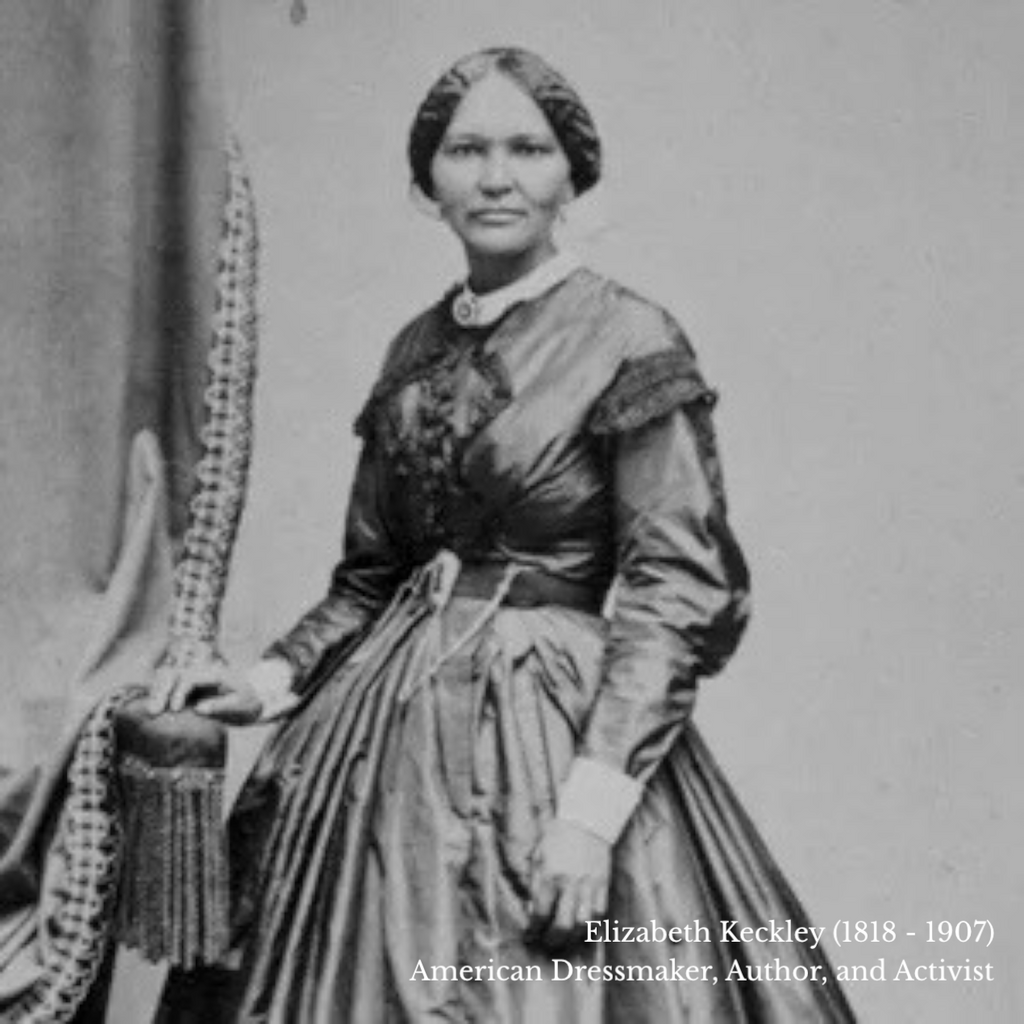Woven Legacies: Threads of Identity...

This summer, I attended the exhibition Superfine: Tailoring Black Style at The Metropolitan Museum of Art (The Met). On my way out, I picked up a couple of books—one in particular, Black Designers in American Fashion, immediately caught my attention. Later, as I began reading, my desire to understand Black people’s imprint on fashion grew deeper. I was struck to learn that even in the 18th and 19th centuries—during the brutal era of slavery—fashion was more than just clothing. It was a language of survival and self-expression, a way for Black men and women to assert identity, dignity, and selfhood in a world determined to strip them of all three.
As Black Designers in American Fashion notes, runaway ads often included detailed descriptions of enslaved men and women. One ad described a woman wearing “a green bonnet, a common cotton shawl, a red plaid frock, and a blue and yellow plaid apron, but no shoes or stockings” (Sec. 1, p. 13). Another spoke of Kate, an enslaved woman labeled as “mulatto” and noted for her skill with a needle. Her notice went on to say that she had taken “a great number of very good clothes” with her—garments that would have allowed her to pass as a free woman (Sec. 2, p. 32).
At first glance, these ads read like mere inventory, but the details reveal something deeper. Even with limited resources, these women curated a sense of style—layering patterns, choosing colors, and asserting identity through what they wore, despite the harsh realities they faced.
It’s important to recognize that before Black women were ever celebrated as “designers,” they were highly sought-after dressmakers. Their skill with the needle was not only practical but artistic—producing garments that shaped households, communities, and even the wardrobes of the wealthy. Elizabeth Keckley, for example, began her career as an enslaved dressmaker whose reputation for impeccable craftsmanship eventually carried her into the White House, where she became the personal dressmaker and confidante to First Lady Mary Todd Lincoln. Her journey from bondage to recognition underscores how the artistry of Black dressmakers laid the foundation for generations of Black designers like myself to follow.
That same spirit continues today. Finding a place in fashion as a Black person has never been simple—it has been a long and often difficult road. But from the fields to the ateliers, we have always found a way to leave our mark. The creativity, resilience, and consciousness of those who came before us built the foundation for the designers, artists, and visionaries we celebrate now. Their legacy is stitched into every garment, every runway moment, every statement of style.
When I think about this lineage, names like Elizabeth Keckley, or Ann Lowe—who was trained as a dressmaker from a young age by her mother, who went on to design gowns for America’s social elite. Lowe's most famous creation, Jacqueline Kennedy’s iconic wedding gown, went uncredited for years, a reminder of how often Black artistry was erased even as it set the standard for elegance.
Then there is Patrick Kelly, whose bold, playful designs in the 1980s broke barriers in Paris as the first American and first Black designer to be accepted to The French Chamber of Fashion and Ready-to-Wear. Kelly brought unapologetic Black creativity to the forefront of high fashion. Around that same era, Dapper Dan transformed Harlem into a fashion atelier of its own, using luxury brand fabrics to craft innovative streetwear that defined hip-hop style and challenged the boundaries of exclusivity. His work made high fashion accessible, reimagined, and unapologetically urban.
And we cannot forget André Leon Talley, who carried the spirit of his Southern roots—his grandmother’s “Sunday best” influence—into the highest echelons of fashion. From the streets of Paris to the pages of Vogue, Talley elevated elegance and perspective, proving that style shaped in the South could redefine the global fashion narrative.
Each of them faced struggles and limitations—but each carved out a space where none had been before.
And so, when I look at the work of today’s Black designers and creatives—myself included—I know it is not just about fashion. It is about honoring the artistry and courage of our ancestors. It is about remembering that even in the harshest conditions, they expressed beauty and claimed identity. I stand on their shoulders, carrying forward a story that began long before me and continues to unfold through every thread of Black creativity.
Through Cealle Creative, I am grateful for the opportunity and platform to create my own legacy—one rooted in storytelling, heritage, and design. Just as those early dressmakers stitched identity into every seam, I weave my grandmother’s stories, my personal experiences, and my inspirations into every scarf. In this way, Cealle Creative is not only a brand but a continuation of tradition—from needle and thread to silk and brushstroke. My work is art to be worn, but more than that, it is a testament to the enduring power of Black creativity and the generations who made it possible.
And so, I leave you with this question: how will you leave your mark—your design, your story, your legacy—woven into the fabric of this world?
Further Reading
Way, Elizabeth (ed.). Black Designers in American Fashion. The Metropolitan Museum of Art, 2021.



With Love,
Cealle
